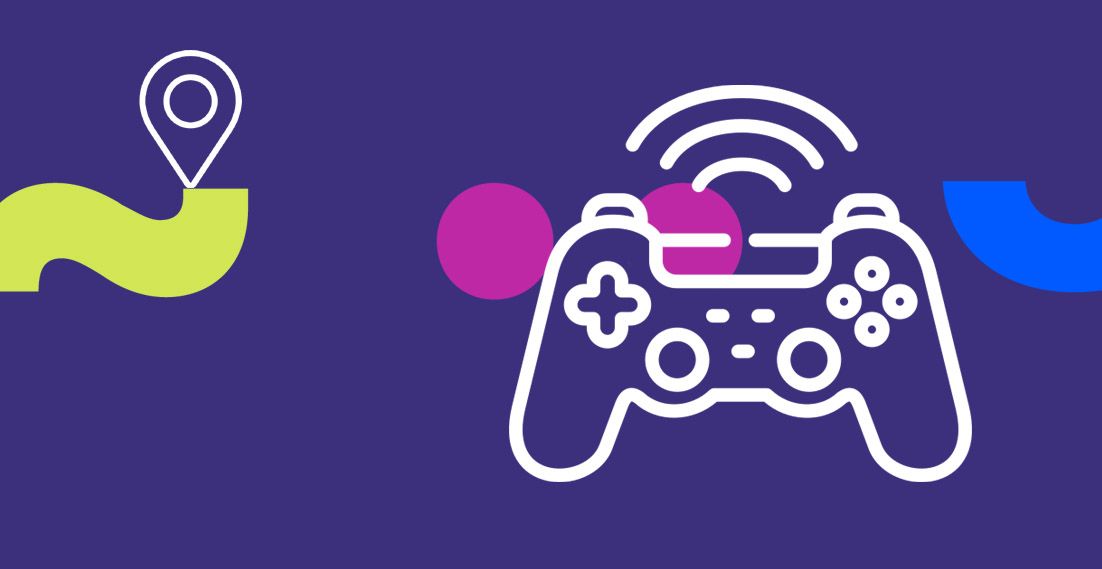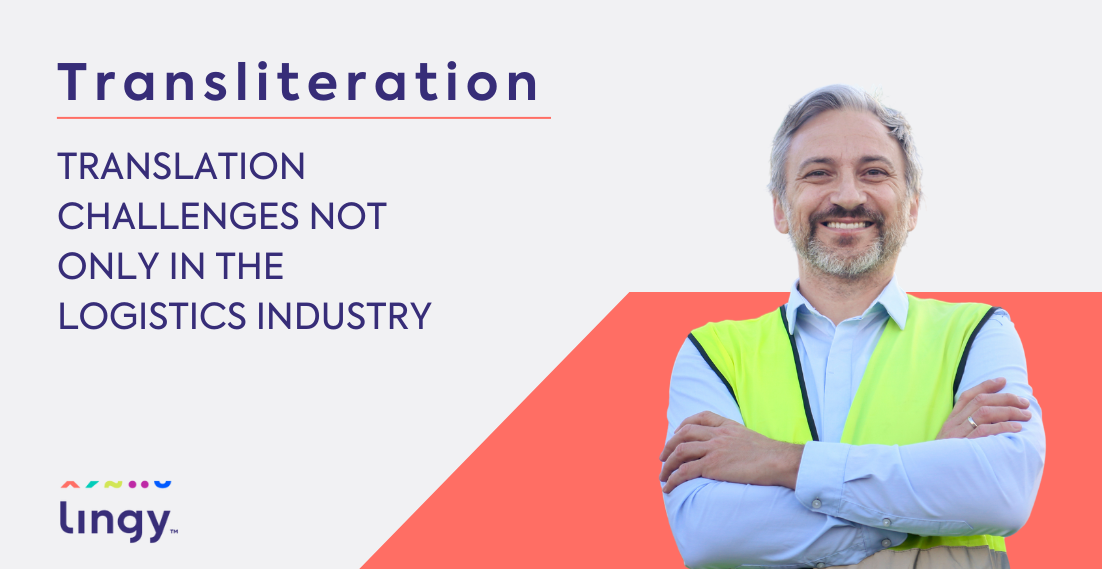The growth of the game translation industry

The origins of video game localization are not that old taking into account that the growth of video game media is also not particularly ancient. In 1980, localization practices were limited to video game cassettes and their instructions for technical and financial reasons.
Join us and work as a translator
The beginnings of data carriers, including computer games
At the beginning of the computer age, punch cards were used while in 1967 computer users switched to floppy disks thanks to IBM, which could hold up to 80,000 characters, or roughly 80 KB (0.001 GB) of data. Memory capacity was limited and it was impossible to store multiple language versions. At that time, video game text was “hard-coded”, which means that the text displayed on the screen was directly inserted into the game code. This generated two big problems: firstly because finding all text segments in the code was a time-consuming process, and secondly, it required translating the text directly into the game code therefore creating the risk of breaking the code and making the game unusable.
For a very long time, the storyline of computer games was strongly limited and the only place with any text on was the main menu.
Gamers had to wait for a real breakthrough in the context of texts and storyline until the 1990s. It was then that the first strategy games were created, in which understanding commands and stories was important for the players.
In the 1990s, we could observe the emergence of a partial game localization. Captions appearing in games were also translated at that time. The appearance of this type of localization coincides with two events. First, the appearance of a CD-ROM that could hold 700 MB of data, which is 8750 times more than the first floppy disk. Secondly, this enabled to store several language versions on the same data carrier.
In fact, the development of computer games since the 1990s has caused the translation industry to start making game translations. The appearance of game consoles contributed to the above, as well as the popularization of computers used in households. Translating games has made sense ever since. With the development of the gaming industry, the translation requirements have also changed.
Nowadays, there are giant data carriers, so the players can enjoy not only texts in games, but also voice over. In the case of localization of an entire game, the audio tracks are also translated. This involves an entire list of associated processes.
First of all, the general costs. Spoken texts also need to be translated (usually voice over or captions), but additionally they have to be recreated. Therefore, the role of dubbing actors is necessary. When localizing spoken expressions, translators must take into account temporal imperatives, but also mouth movement. This is called synchronization.
Properties of game translation
It can be stated that there are 10 major video game families (adventure, action, strategy, role-playing games, etc.) each with an average of 5 sub-categories. Some translators specialize only in the styles they are familiar with, other video game translators remain general, often looking for specific terms in areas they have not yet mastered.
1. The key feature of translating video games is the variety of tasks to be performed: it is not just about translating the text content of games (menus, descriptions, dialogues, etc.), as there are many elements that need to be translated, such as:
- Main content of the game, which includes: dialogues, written parts such as descriptions, tasks, story parts,
- Instructions,
- Terms and conditions,
- Marketing elements,
- Menu,
- Messages,
And also:
- Presentations,
- Covers,
- Marketing content,
- Subtitles or dubbing of videos and other multimedia elements,
- Localization and adaptation of units and measures,
2. A good video game translation requires access to the demo version. Unlike standard translation, video game translation requires increased contextualization of words to know which the correct translation in the game interactions is. It is difficult to translate correctly if you cannot see or hear the parts spoken by the characters. Ideally, a video game translator should therefore have access to the beta version of the game that needs to be translated. The translator must have a clear vision of each character in order to faithfully reproduce the original idea. This approach is exactly the same as in the case of dubbing films or television shows, where you have to put yourself “in the shoes of a character”.
3. Aspects of localization. Localization of a video game covers all aspects of the game: the story, dialogues, subtitles, audio and video design, instruction messages, action buttons, symbols, product description, user manuals, tutorials, technical characteristics of computer hardware and software, promotional and distribution services (e.g. Square Enix), animations, user interfaces, scenarios.
Stages of game translation
The project starts with the translation of on-screen messages, which includes: menus, game interface, dialogues, error messages, help and information, and in some cases subtitles. The translation must be clear and brief as the available screen space is generally very small. The translator often has to deal with a lack of context and the need to limit characters, sometimes using abbreviations or omitting certain passages.
Screenplay translation – the most creative step. The translation of the audio script usually follows on-screen message translation, but it can also be done simultaneously. The translator must know whether the texts will be recorded (dubbed) or whether they will be integrated on the screen with the subtitles.
In the case of text intended for dubbing, the translator must pay special attention to the fluency and good expression of his/her work. Therefore, translating an audio script requires a lot of creativity, which is reflected not only in the adaptation of the dialogues, but also in the adaptation of character names, toponyms, songs, culture-specific festivals, names of weapons, etc.
These terms are sometimes puns in the original text and should be retained in the translated text as much as possible. If there are elements in the game that could shock the target audience, it is the role of the native translator to bring this to the attention of his/her client.
Another point for the translator to consider is the PEGI (Pan-European Game Information) age rating system. The translator will have to adapt the vocabulary to the age group of the game audience.
The final step involves work on the packaging and instructions. At the end of the project, the game instructions are translated. The translator must ensure that the tips given to the players are accurate and consistent, and above all, strictly follow two different types of terminology: the manufacturer (PS3, Xbox, Wii, DS, PC etc.) and the client’s requirements, which is often the publisher of the game. The back of the packaging is often attached to the manual (back of the box) that needs to be translated. The challenge for the translator is to find the right phrase or slogan that will generate immediate interest of the future buyer.
Remember that localization is key:
a) It helps to avoid many of the traps that await you when you target a user from a specific geographic region;
b) It helps to reach the user at the local level;
c) It makes the target user feel familiar and does not feel any barriers;
d) It removes all discrepancies or everything that would be unacceptable on the linguistic and mental level for a recipient from a particular region;
e) It matches terminology, slang, cultural elements and other details to the game audience;
Here are some localization challenges:
- The need to fit text to buttons, frames, windows, etc. When translating from one language to another, the length of equivalent words changes, which cannot distort the interface, extend beyond the space allocated to them, and even more so change the meaning. If a game has not been developed with localization in mind, it can be technically very difficult to implement afterwards
- When dubbing is involved, a new problem arises – respecting synchronization, during a cutscene or interlude with dialogues, sentences must have the same length so that the characters do not speak at the same time. The translator must therefore try to maintain the meaning, tone and style. Taking into account such conditions, it is obvious that you need a team that knows both languages perfectly and has a great ability to adapt and improvise. When it comes to audio, there is a need to engage actors with voices that are well-suited to the original characters. A scary looking, tempered warrior with an excessively high-pitched voice can lose all credibility. Likewise, the accents should be retained as well. Anglophones have significantly different accents in their own language, varying between English, Scots, Americans and Australians. It’s just as hard to find actors with a Chinese/Russian or an even more exotic twist.
A few examples of an unfortunate localization
High-quality translation of games should be almost unnoticeable to gamers. Text, graphics and gameplay work together seamlessly to give you the best user experience. The same cannot be said for a poorly translated game. Awkward phrasing, formatting blunders, and culturally irrelevant idioms can spoil even the best effect.
Wing Zero
Localization of a game is not an easy task, some games are distinguished by outrageous errors, so much so that they sometimes become real phenomena on the Internet. The internet is full of examples of failed localization from Japanese to English.
For example:
“All your base are belong to us”. This sentence is from the Japanese game Zero Wing on Megadrive, translated into Japanese, hence the catastrophic result. This kind of bad English translation is called Engrish.
World of Warcraft
Probably the biggest scandal when it comes to World of Warcraft was the slightly late, and above all a very redundant and questionable decision to translate proper names and specifically especially the names of capitals. Cities long known to players as Stormwind, Ironforge, and Thunderbluff became Hurlevent, Forgefer et les Pitons du Tonnerre in French, respectively.
In this case, the original meaning was completely lost in the translation.
There have been long debates on official forums to discuss the importance of proper name translation, and both sides have valid arguments. However, taking examples outside of the video game world, can we now imagine Harry Potter as the French Henri Potier?
Another highlight of this game’s localization is its unique adaptation for China, which caused quite a stir due to pressure from the Chinese government. Many visual elements had to be modified to satisfy the censors, including the removal of all skulls and bones.
Therefore, more or less subtle changes are introduced in games to adapt them to the culture and customs of a specific market. Japanese games are often modified, for example to remove dialogue or romance that would be considered too immoral for a Western audience. On the other hand, violence and brutality are generally toned down when games are exported to Australia or Germany.
Original version vs Chinese version
“I Feel Asleep” – Metal Gear
The original Metal Gear was known for its weird and random dialogue. The most glaring mistake was made early in the game when the in-game guard exclaims, “I feel asleep!” Of course, the guard meant “I fell asleep” (when the main character sneaks around the guard). This sentence is another fan-favourite video game translation error.
“And that is responsible for your mother’s stuff” – Tales of Berseria.
Released in 2016, the Japanese game, while highly praised for its strong gameplay, has a poor translation towards the end of the game. Sentences such as “And this is responsible for your mother’s stuff” were faced by the players, making it incomprehensible.
Conglaturation !!! – Ghostbusters
This is another classic of mistranslation. Based on the movie Ghostbusters, the American version of Ghostbusters had the following text:
“Conglaturation !!! You have completed a great game. And prooved the justice of our culture. Now go and rest our heroes !”
Considering that this was a text that appeared at the end of the game, the developers probably should have done a more thorough quality check of the translation.
The main limitations of video game translation
Translating video games involves several structural problems:
A) Large volume to be translated. Unlike a book, video games are not estimated per page, although most contain a very large amount of text. Modern video games have the same amount of text as novels (an average of 50,000 to 100,000 words in English).
b) Very short deadlines set by game publishers.
c) Lack of basic information about the game.
d) Lack of recognition (impression of being a ghost author).
In addition to formal limitations, there are also challenges relating to the human aspect.
- The slightest translation error, linguistic nuances or inconsistencies are likely to negatively affect the player’s experience, which will affect his/her perception of the production.
- A video game translator also needs to express high adaptability skills in order to adjust the translation to the format of the dialog boxes, etc.
- Translating the screenplay, dialogues and all elements of the tutorial requires a lot of creativity to recreate the desired image of the game in the target language. The translator also needs to find the equivalent of the vocabulary to translate all fictional elements (character names, attacks, weapons, etc.). For this purpose, it is also necessary to adjust the translation to the type of game (action games, adventure games, strategy games, role-playing games, PC games, etc.) in order to guarantee that the experience players real emotions and authenticity.
- Puns, jokes, phraseological expressions must be skilfully translated and carefully localized, transposing the original intention, while adapting to the cultural references of the target country, as well as to the audience and age group. For this purpose, the translator must therefore have a thorough knowledge of the culture of the translation destination country.
- Considering the variety of formats involved in translating video games, the translator needs to be familiar with all types of media (source files, databases, audio, video, etc.).
- The translator has to adapt to a limited visual space, with an exact number of characters, and also with imposed timing that requires perfect synchronization.
- Translating marketing and technical elements also requires specific skills related to this type of media. The person working on localization is actually required to translate the elements necessary for proper marketing (title, slogan, cover, etc.) and for the player to use (technical manual, instructions, etc.). Therefore, the translator has to follow the original terminology used by the client, publisher and developer of the game.
- Particular attention should be paid to some social and linguistic issues (measurement units, misinterpretations, numerical formats, address format, date and time format), on a technical level (window formats, fonts, default font selection, case differences, character sets, sorting) as well as on the legal level (legal lexicon for each country, payment methods, currency conversion and taxes).
- Continuous contact with the video game representative for the translation is essential, and this requires commitment and at least communicative knowledge of the producer’s or publisher’s language. Most video games are translated from the first phase of development (beta) to allow for simultaneous release in several languages, with retouching, testing and last minute modifications.
- In addition to time pressure, the video game translator has to pay attention to reports of regular and numerous user interface tests by game developers. Interface testers ask for some segments to be retouched or instructions to be reformulated. This is an inevitable and difficult task that occurs in the final stage of work on production.
- Applying patches. This is an existing idiomatic file for most video games. Online gamers are very familiar with the “language patch” which includes the “titles and scripts” package and/or the “voice” package in their preferred language. Some specialized sites offer game titles and scripts in a large variety of languages. In-game voices are also often available on the same pages.
What knowledge about electronic data processing should a translator have?
Source: Localization of computer games – is it easy? New perspectives in the training of written translators
Jagiellonian University Erik-Jan Kuipers
According to Koetsier (2008), the knowledge about EDP (Electronic Data Processing) that a translator should have can be divided into three areas: information competence, IT competence and the ability to use translation software.
- Information competence is understood here as the ability to effectively search for vocabulary and terminology as well as contextual information in various media and sources. It is also the ability to critically analyse such information and use it in future projects. Information competence also covers the use of search engines such as Google, online or CD dictionaries, translation memories and terminology databases.
- IT competence requires knowledge of EDP, that is professional use of computer hardware and software, text editing and Internet use. The ability to use translation software implies the use of tools designed specifically for the needs of translators, which will simplify and speed up the translation process. Firstly, the latter is accelerated by the fact that such tools save translated text segments and display them as translation suggestions when working on new jobs. Secondly, thanks to the use of translation aids, the desired terminology is used consistently, because the same previously used solutions are always provided for the same text segments. Both of these translation assistance capabilities help save time and are therefore essential when it comes to meeting tight deadlines in the fast-growing localization industry. Most text documents are delivered in TXT, RTF, DOC, HTML or XLS formats, which makes it possible to work using CAT tools at the text level.
- Tools such as Alchemy Catalyst, Passolo or Visual Localize, often used in the translation industry for localization, make it possible for the translator to work freely with the source code. At the same time, they enable the assessment of the final results and possible adjustment of the text in space available on the screen. Unfortunately, due to the multitude of data formats in computer games and insufficient standardization in the industry, it is not possible to optimally translate computer games using just one tool, such as in the case of website localization or utility software.
As you can see, it is necessary to use all existing translation resources when it comes to games, rely on the available terminology resources (glossaries, translation memories, etc.) and carefully follow the client’s instructions. In addition, translators should keep in mind that the terminology to be managed is broken down into several categories:
● terminology specific to the editor, developer, or support (such as key names);
● terminology specific to the topic or type of game (sports, war, science fiction, etc.);
● game-specific terminology (character names, place names, etc.).
Five recommendations on how to become a professional video game translator
A computer game translator is not a profession but something that originated through passion. Below are characteristics of a game translator
● Full command of given languages, especially English. Video games constitute global entertainment that has no linguistic boundaries.
● If video games are your passion, you’ve solved half the problem. Love for video games is a specialization itself. If you’ve been in this field for years, you definitely know the language and recurring problems.
● Focus on the audience, not the original text. You can’t just translate, but also adapt each text to your target culture.
● Don’t be a robot: gamers are looking for fun and a sense of closeness to the characters, not artificial, nonsensical phrases. Indulge in the world of video games completely.
● Know the technical aspects of localization such as software, special codes or a character limit for a dialog box. This way a translator will gain agility and face the technical challenges of video game localization. The idea is to become a part of the game instead of a link in the game’s production line.
● Knowledge of CAT tools – most localization companies require very good knowledge of one of such programs. The most popular of them are SDL Trados Studio, memoQ, OmegaT XTM and Wordfast.
How to become known on the translation market?
If you want to work in the video game industry:
- Don’t hesitate to mention you attitude to a given topic. Not only to show your experience and what you know about the material you are working with, but also because it is an industry with its own culture and vocabulary.
- Choose a specialization that reflects your preferences. Talking specifically about the type of games you like will be an added bonus. The level of competition in the localization industry is strong, so it’s best to specialize in certain types of games.
- Stay professional. Keep in mind that the clients are looking for a professional. Therefore showing enthusiasm and passion you have for games is an advantage, but don’t overdo it making yourself look like a mere fan wishing to work on video games for money. Highlight your work experience and prove that you are able to provide high-quality work.
- Get experience. In the video game industry, translators receive very little recognition for their work. For some unknown reason, the creators remain very mysterious with their contractors. Therefore, you will need alternatives to have some material to show your potential clients. You can approach small independent labels to negotiate the possibility of appearing on the official list of people involved in the production.
- Offer free services in exchange for mentioning you to a wider audience. You can find projects like this on Facebook groups such as Indie Game Localization or follow video game development groups on social media.
- Participate in localization events or contests. In Japan, you can find events where the goal is to meet an experienced translator and a novice translator to enable the translation of the game to be completed in one day. If you are motivated, you can create an event yourself that will allow you to acquire many contacts.
- An internship in a localization company is the best possible way to efficiently enter the world of localization. Working under the supervision of experts who will help you at every stage and provide advice on how to improve your translation skills is the best way to gain valuable experience in the industry.
- Working as a game tester is as good a career path as an internship in a localization company. Testers are often responsible for in-game language validation, so this is the perfect place to start your adventure with translating games.
Join us and work as a translator
Publishing items
Authors: Stephanie O’Malley Deming, Heather Maxwell Chandler
Authors: Minako O’Hagan, Pilar Orero, Carmen Mangiron
Author: Silvia Pettini
Authors: Carmen Mangiron, Minako O’Hagan
Author: Laura Mejías-Climent
Author: Clyde Mandelin
Why are advertising campaigns not effective? 3 reasons related to the challenges of marketing translations
Learn about the 3 causes of ineffective advertising campaigns related to marketing translations.
Transliteration – translation challenges not only in the logistics industry
A mistake made due to a incorrect translation or rather transliteration can lead to serious operational and legal consequences, as we discuss below.
How to publish a book? Translation tips and more
How can you publish your own book? Before you make a decision, get to know the advantages and disadvantages of the proposed solutions, including in the context of possible book translation.
Website translation – a proposal for Women’s Day not only for e-commerce
The upcoming Women’s Day is the perfect opportunity to plan special marketing campaigns to reach new audiences. E-commerce companies are keen to introduce dedicated offers during this period. They also decide to expand abroad to tap the potential of international markets, also on everyday basis, outside special holiday periods. In this context, website translation plays a key role.



